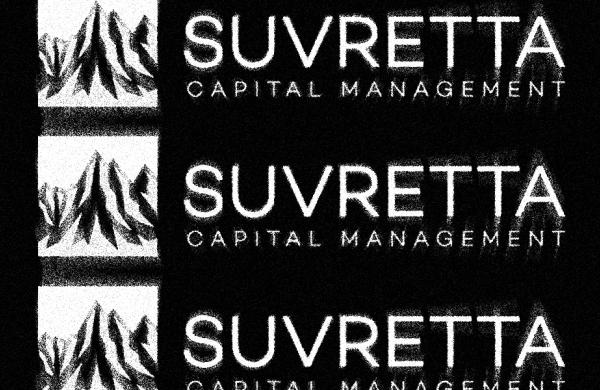For all the talk of a hedge fund resurgence following last year’s strong performance, one group of managers has been left behind — again.
Global macro managers — who trade currencies, futures, and rates to bet on macroeconomic trends — have struggled for years, and 2017 was no exception. The average global macro hedge fund gained just 2.25 percent last year, compared with an average hedge fund return of 8.5 percent across all strategies, according to data tracker Hedge Fund Research.
Several of the most established macro hedge fund managers were hit the hardest. Caxton Associates’ flagship Caxton Global Fund lost 13.4 percent, according to a person with knowledge of the matter. Tudor Investment Corp.’s Tudor BVI Global Fund fell 1.8 percent, while Moore Capital Management’s Moore Global Investment Fund gained just 1 percent and its Moore Macro Managers fund returned a scant 0.49 percent, people familiar with the results said. Brevan Howard Capital Management’s eponymous Brevan Howard Fund was down 5.4 percent, said a person familiar with the fund’s performance. And Bridgewater Associates produced modest 2017 gains in its Pure Alpha II fund, at 1.2 percent, according to a person familiar with the performance.
There have been consequences to the disappointing results over the past few years. Brevan Howard, Caxton Associates, Moore, and Tudor all have cut fees on various funds, and a person familiar with the matter said Tudor’s main hedge fund now manages $4 billion, roughly half of what it did one year ago.
Still, amid the wreckage, a few pulled off decent — even double-digit — gains. Jeffrey Talpins’ Element Capital Management returned 5.5 percent in 2017 after a 19 percent gain in 2016, according to a person familiar with the matter. Guillaume Fonkenell’s Pharo Management returned 16.6 percent in its Pharo Macro Fund last year and 27.4 percent in its Pharo Gaia Fund, said a person familiar with the firm’s performance. Glen Point Capital, backed by macro trading legend George Soros, returned 22 percent last year, according to a person familiar with the numbers.
So, what accounts for the huge performance disparity among these funds? The managers mentioned in this story declined to comment, but hedge fund industry veterans say there were a few common factors that boosted the winners and dragged down the losers last year. Managers say that a lack of volatility, coupled with unprecedented central bank intervention, have made it impossible for managers to ply their strategy effectively — particularly in the large, liquid developed markets in which they operate.
“There’s basically been this QE-induced, liquidity-driven coma in markets where you’ve had this positive drift to just about everything,” says Norman Kilarjian, head of macro and quant strategies at investment consultant Aksia. “You don’t have a ton of opportunity to engage and provide liquidity and capitalize on a mispricing per se.”
Kilarjian adds that too-strict risk controls, such as tight stops (orders to sell securities when their prices hit a predetermined exit point), have also hampered some of the bigger firms.
“It’s hard for them to move quickly,” he says. “Instead of starting with a position early and big, they start small and get bigger as they’re proven right. That is the opposite of what you want because then you get to full position size right when [trades] start to revert to the mean.”
Osvaldo Canavosio, head of manager research and sector head for global macro at investment manager Man FRM, says this factor, combined with a reversal of post-election trends that boosted managers in the last quarter of 2016 but changed direction in the first quarter of last year, also hampered returns.
Jon Hansen, managing director and hedge fund specialist at investment consultant Cambridge Associates, says changing market dynamics may also have affected returns for some veteran managers, particularly in terms of how the Federal Reserve communicates policy changes, which is much more transparent than it used to be.
“The flow of information is much faster,” he says. “The interplay between markets and policy is different than what it was in the past, and that changes the opportunity set.”
There is also the elephant in the room: some managers just keep making the wrong calls, according to one hedge fund industry veteran. In any case, there were profitable trends to bet on last year.
“The macro opportunity set in emerging markets has been more interesting,” says Canavosio. And any macro fund that had exposure to U.S. equities benefited from the strong stock market returns last year. Shorting duration — particularly 2-year Treasury rates — also was a profitable strategy, Kilarjian says.
The old-guard managers are not giving up. Brevan Howard launched a new fund in 2017, Caxton formed a new one in January, and Tudor is restructuring its firm, including shuttering a discretionary macro fund, according to people familiar with the firms’ activities. And these firms have gotten off to a strong start this year: Tudor’s Global fund had gained 4.5 percent through late January, Caxton Associates LP had gained 5.3 percent through January 29, and a new Brevan Howard fund run by trader Alfredo Saitta had gained 6.7 percent through January 26, according to a Wall Street Journal report.
No one knows when the roaring bull market will recede — though Monday’s steep selloff had many wondering if that’s already starting — but experts say macro will find favor with investors when it does happen. “Nobody wants a diversifying strategy if it’s not making money,” says Canavosio. “But it makes it very attractive when conditions become supportive.”






